
Electoral intelligence applied to the results of the general elections in Panama
The objective of this article is to show the potential of the exploitation of diverse data sources and combined analysis methodologies to obtain social and electoral knowledge in a territory from different geographical levels.
The case that we present on this occasion is that of the general elections of Panama, held on May 5 by which President Nito Cortizo was proclaimed that, with 33% of the votes beat, by a margin of only two points, to Rómulo Roux.
Based on the microdata of the surveys conducted by GAD3 for the newspaper La Prensa, public socio-demographic data and historical electoral results, we conducted a comparative study that combines methodologies and techniques of geoanalytical analysis and data visualization.
In the following series of images, we will show the unofficial electoral results for the winning candidate, offered by the Electoral Tribunal of Panama, facing different variables and socioeconomic indicators.
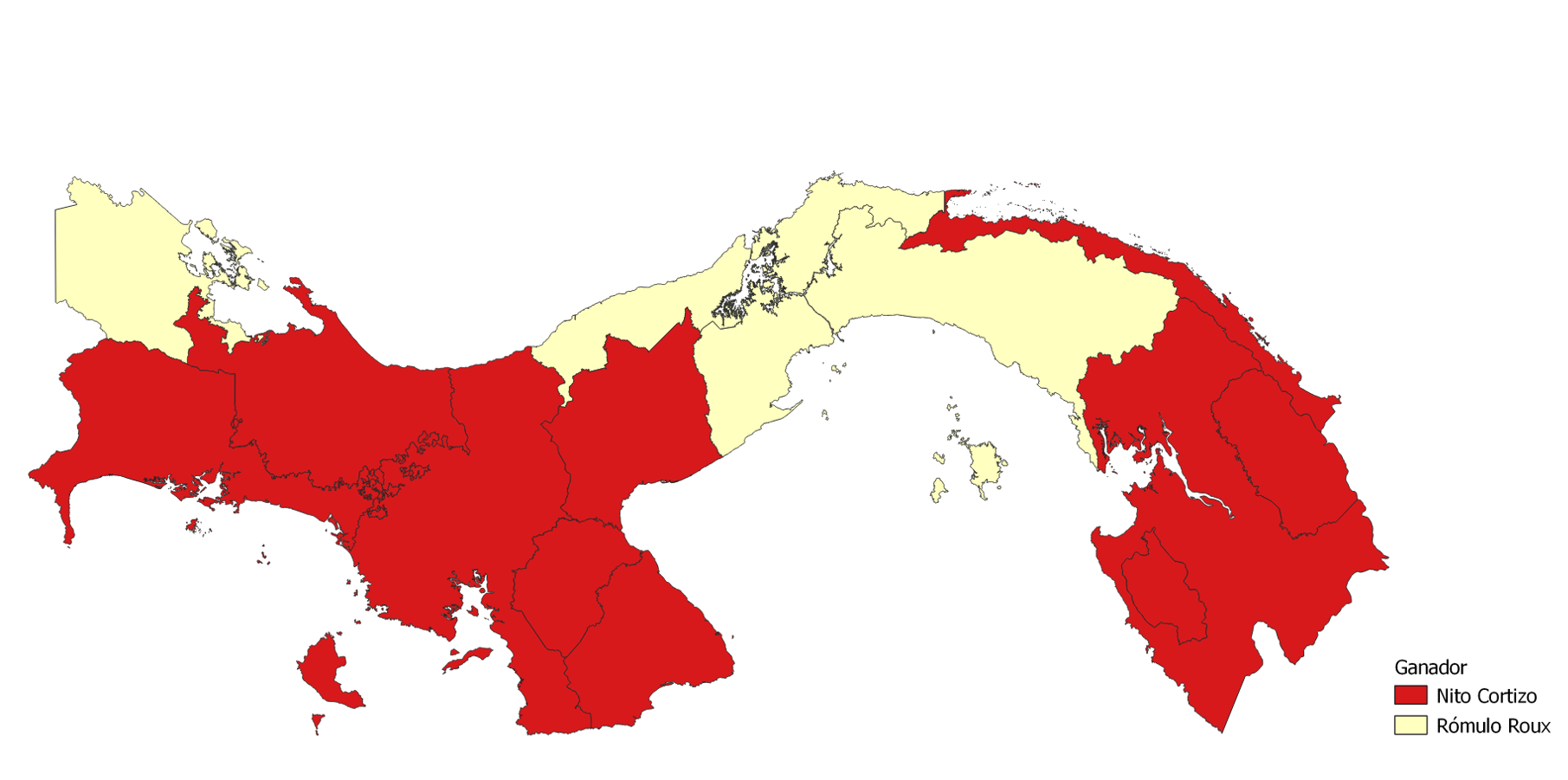

The clear geography division of the winning candidate is immediately striking. To delve into the reasons for this division, we can address these results against different socioeconomic indicators such as the Human Development Index (HDI).
As a more relevant conclusion, this indicator shows an evident correlation between the provinces with the lowest HDI prevalence and the vote towards the candidate Nito Cortizo, while those with a higher HDI predominate, such as Panama or Bocas del Toro, present a majority support to the Roux candidate.
If we look at the percentage of abstention, despite the fact that participation has been high in general, it is observed that in the most economically and socially developed areas as well as in the indigenous districts, the highest percentages of abstention are located. In both cases, these data of abstention may be determined by the political disaffection caused by corruption cases and unemployment for the former and by a feeling of non-representation for the latter

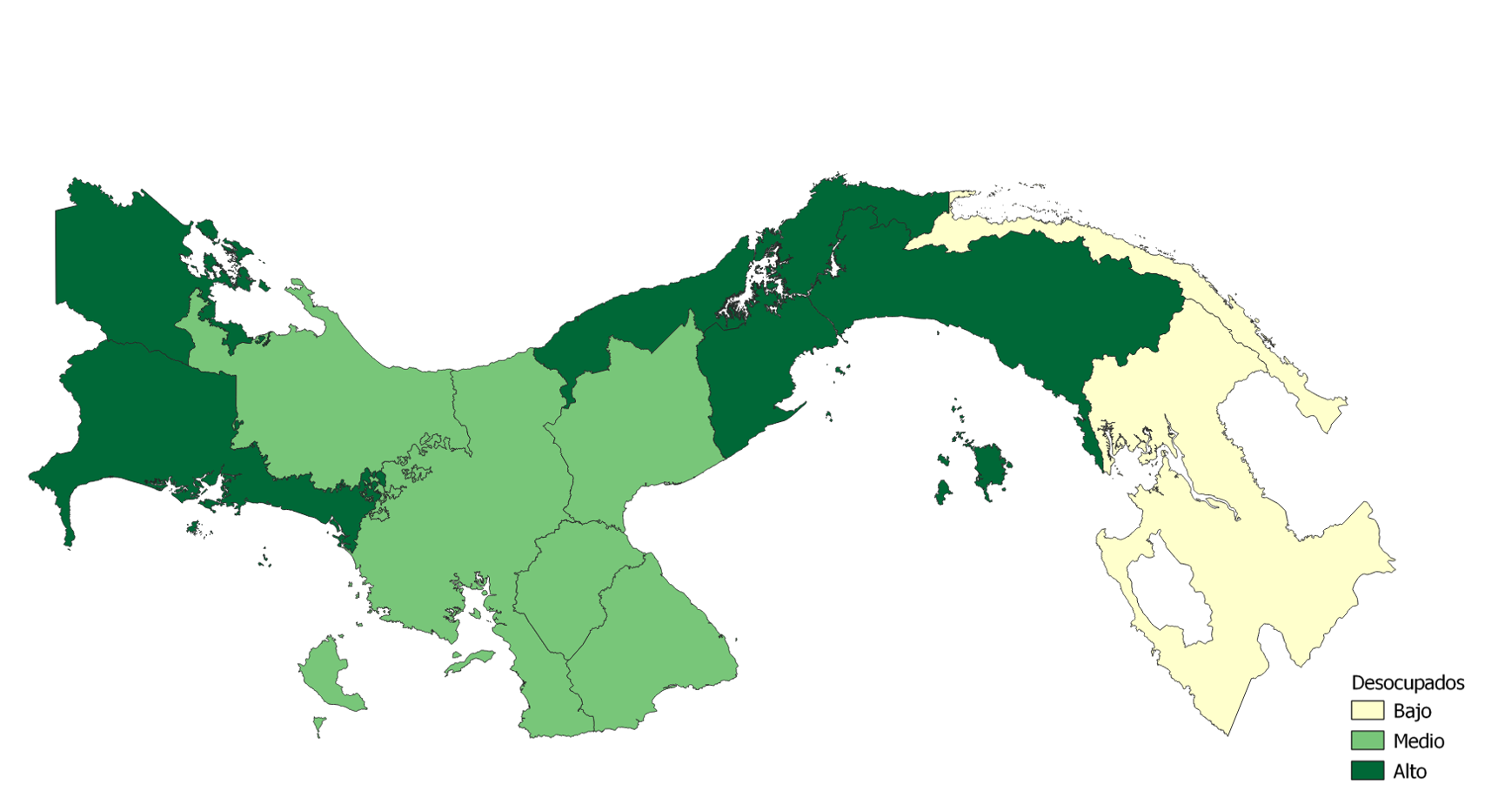
The economic reality of Panama presents a marked dichotomy among the populations according to the purchasing power. Panama is the sixth most unequal country in the world according to the World Bank ranking based on the Gini index, with almost a fifth of its population below the poverty level, an upper class that enters almost 35% more than the lower classes.
This fact becomes more evident in the urban areas in which the differences of the country are transferred at the neighborhood level. Below is a detail of the micro-level analysis of the metropolitan area of Panama City. The image shows the strong correlation between the Social Vulnerability Index developed by Minsait and the level of abstention in the metropolitan area of Panama City.
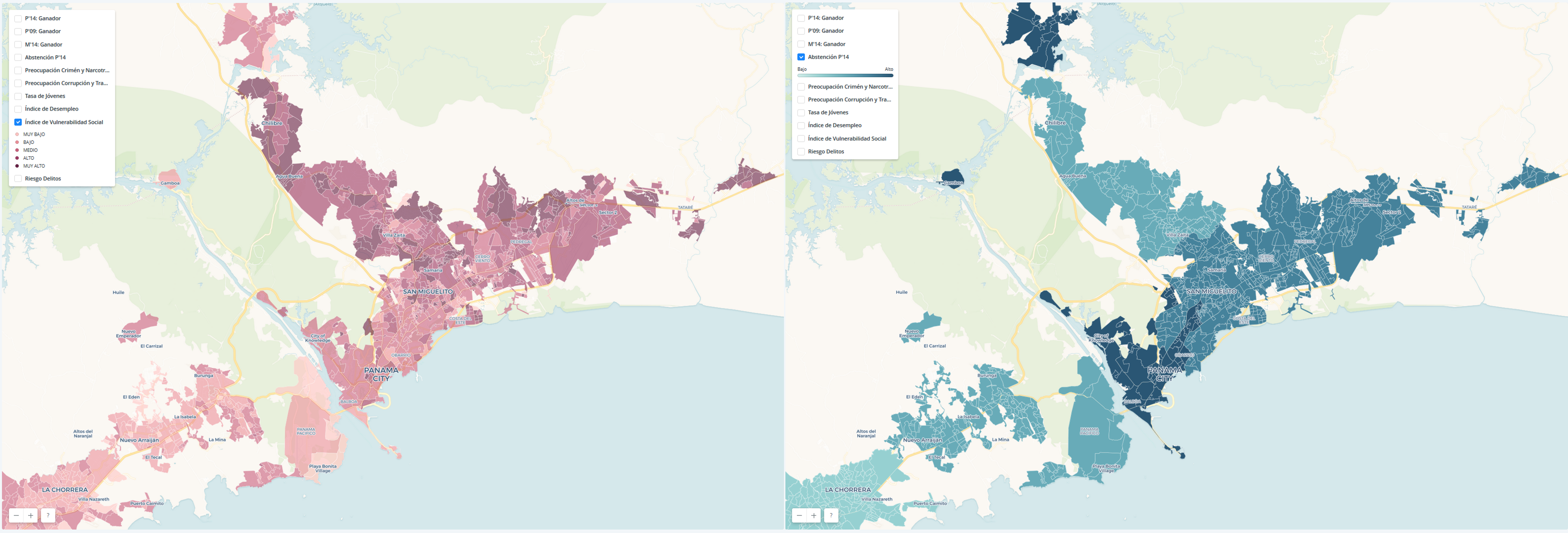
The province of Panama, despite having a high level of development at the macro level, has neighborhoods with a high Social Vulnerability Index and, that is where abstention rises; which causes the total percentage of abstention in the province to increase. The micro level analysis allows a deeper understanding of the territory and its singularities, which are informed thanks to the microdata of GAD3 surveys, and which allow us to get closer to that reality by projecting these surveys on the territory of Panama.
The result of the analysis and the segmentation of microdata by intention of vote to the position of president, the groups of age and the provinces of residence of the voters, among others, are offered in the following image.
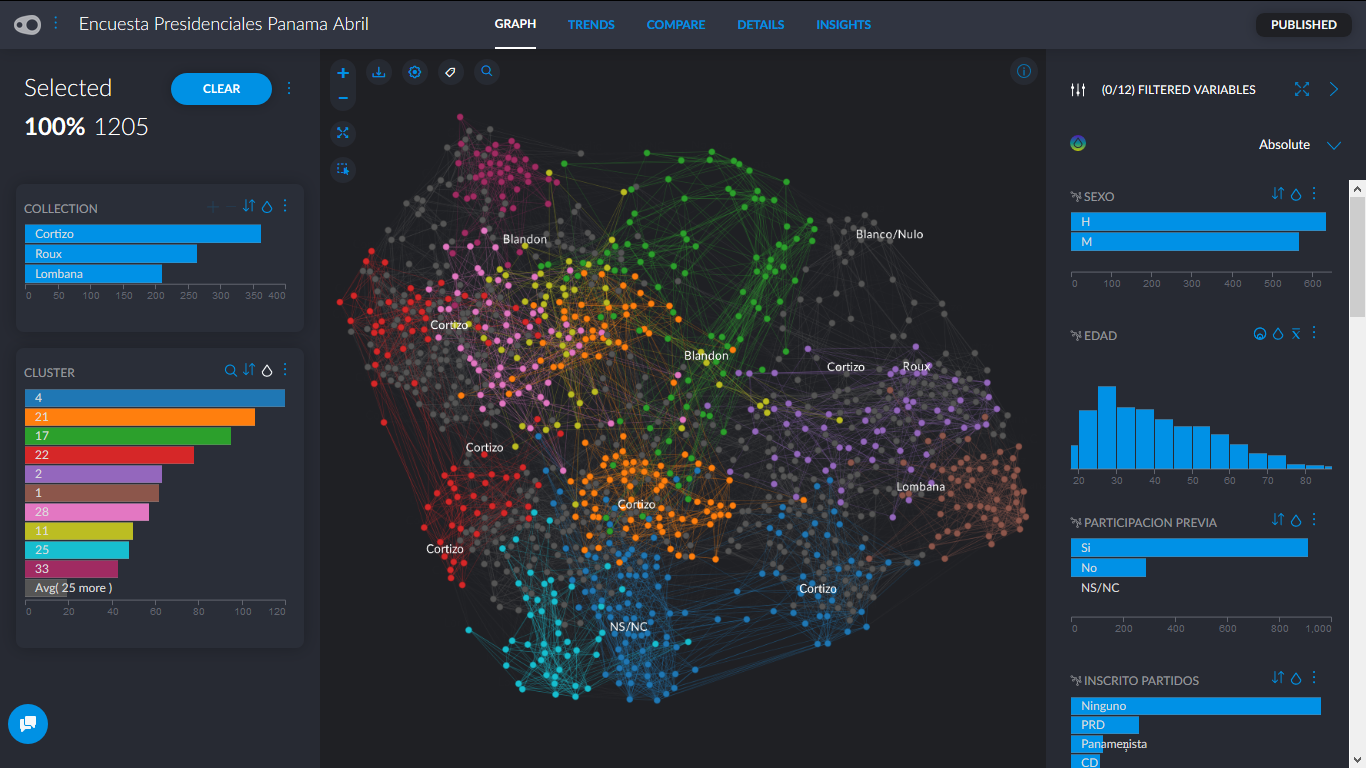
It is possible to access the interactive graphic through the following link: https://public.graphext.com/756dedb6b970abf5/index.html
If the voting communities of the two main candidates are analyzed independently, it is possible to identify the most relevant attributes that characterize each group. Next, the results of the analysis of the most relevant attributes are presented to characterize the community of voters that supported Nito Cortizo against those who supported the Roux candidate.
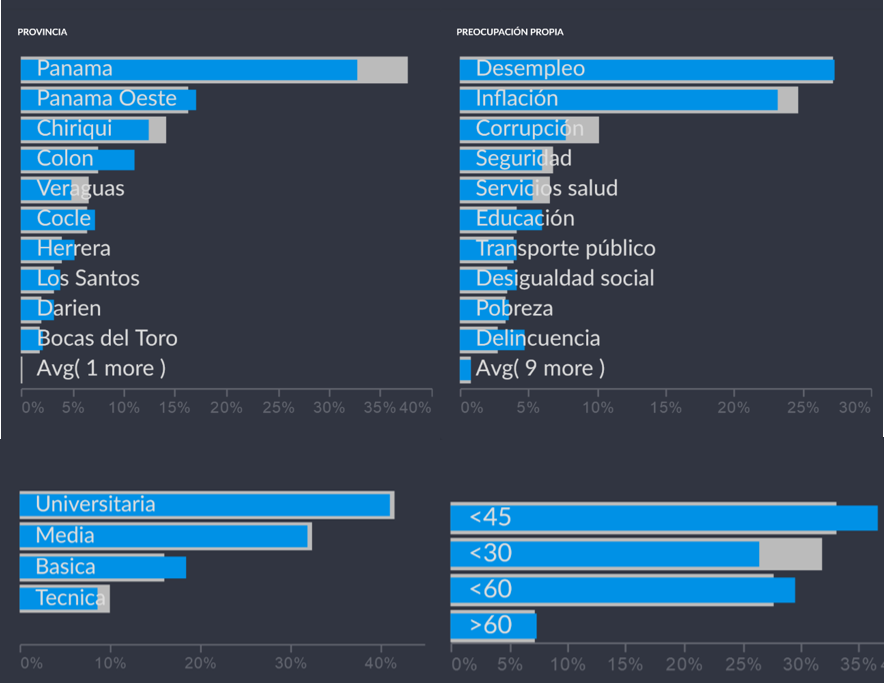
As the analysis shows, the group of voters that supported Cortizo in the last general elections shows a significant overrepresentation in the province of Colon and a slight overrepresentation in the provinces of Coclé and Herrera. In relation to the concerns of this group of voters, their main concerns are unemployment and inflation, but they point out that they are worried about crime and education at a higher percentage than the national average. The level of education of the voters of Cortizo is very close to the national averages showing only a slight deviation in voters with basic training. Age groups over 45 and over 60 also show a slight overrepresentation in the group.
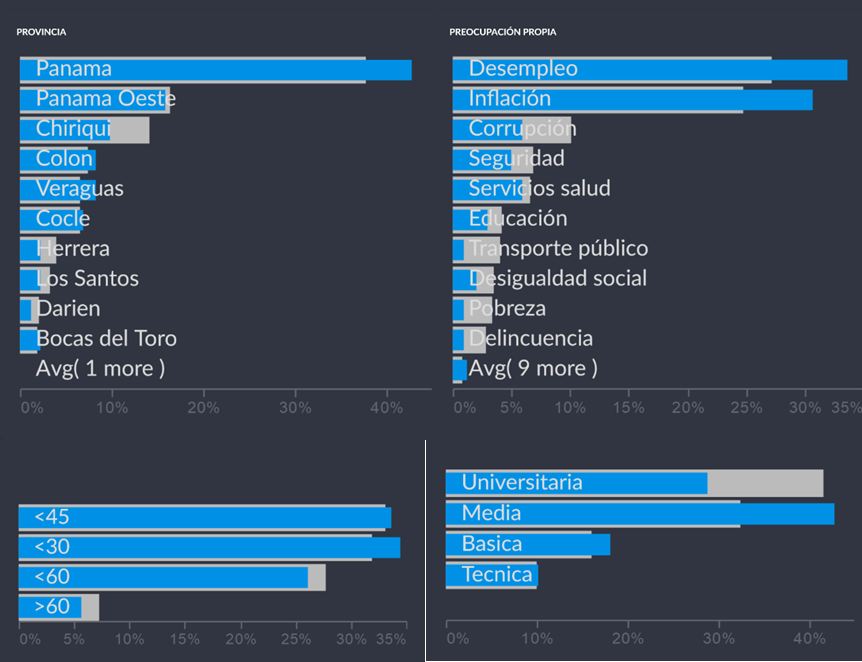
The group of voters that supported the candidate Rómulo Roux shows a significant overrepresentation in the province of Panama. In relation to the concerns, this group of voters shows greater concern about unemployment and inflation than the national average. The level of education of Roux voters is below the national average at the university level and significantly above the average level. According to their age group, Roux voters are very close to national averages.
With the data provided by the survey, the data regarding the main concerns of the citizens have been extracted and a map has been created that aims to illustrate the predominant concerns in the different provinces of Panama.
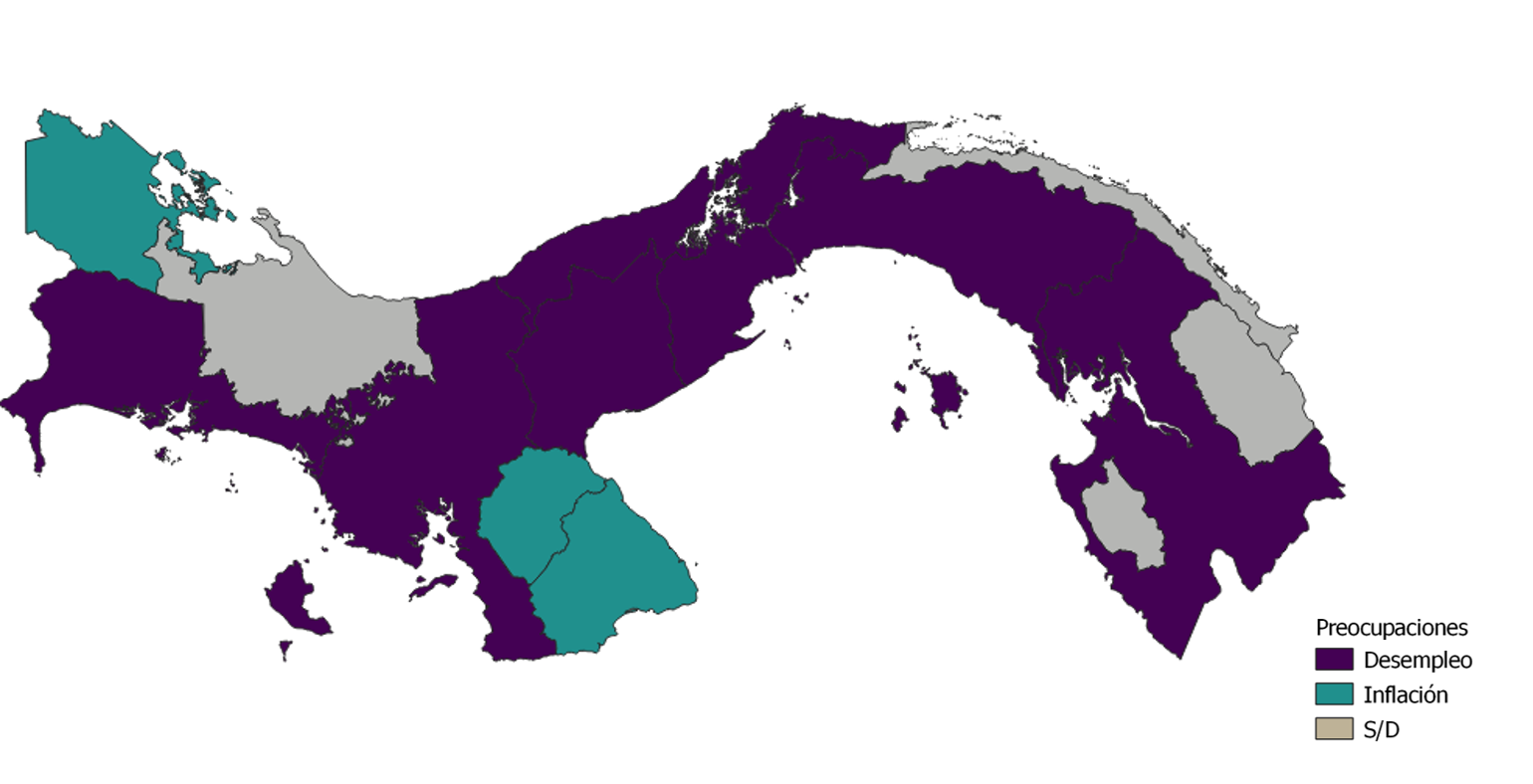
In this article we have tried to show the potential of the combined analysis of data from different sources and scales (socio-demographic, survey and electoral history), with the application of micro-level analysis techniques and methodologies, observing the territory and its behavior at any level and explaining macro variables from behaviors in the micro scales.
Thanks to the integration of GAD3 and Graphext methodologies and technology from our Onesait Democracy platform, we can offer intelligence services with the most solid knowledge bases available today. As we discussed in previous articles, one of our main objectives is to expand and consolidate collaboration models with entities that allow us to continue innovating and improving knowledge services that we offer to our clients.
Tribunal Electoral del Gobierno de Panamá https://www.tribunal-electoral.gob.pa/
The Human Development Index (HDI) is an indicator of human development by country, developed by the United Nations Development Program (UNDP). It is a synthetic indicator of the average achievements obtained in the fundamental dimensions of human development, namely, having a long and healthy life, acquiring knowledge and enjoying a decent standard of living.
ÍGini Index by World Bank https://datos.bancomundial.org/indicador/si.pov.gini
Social Vulnerability Index (SVI): Synthetic Index developed by Minsait that includes data on unemployment, poverty or housing among others.









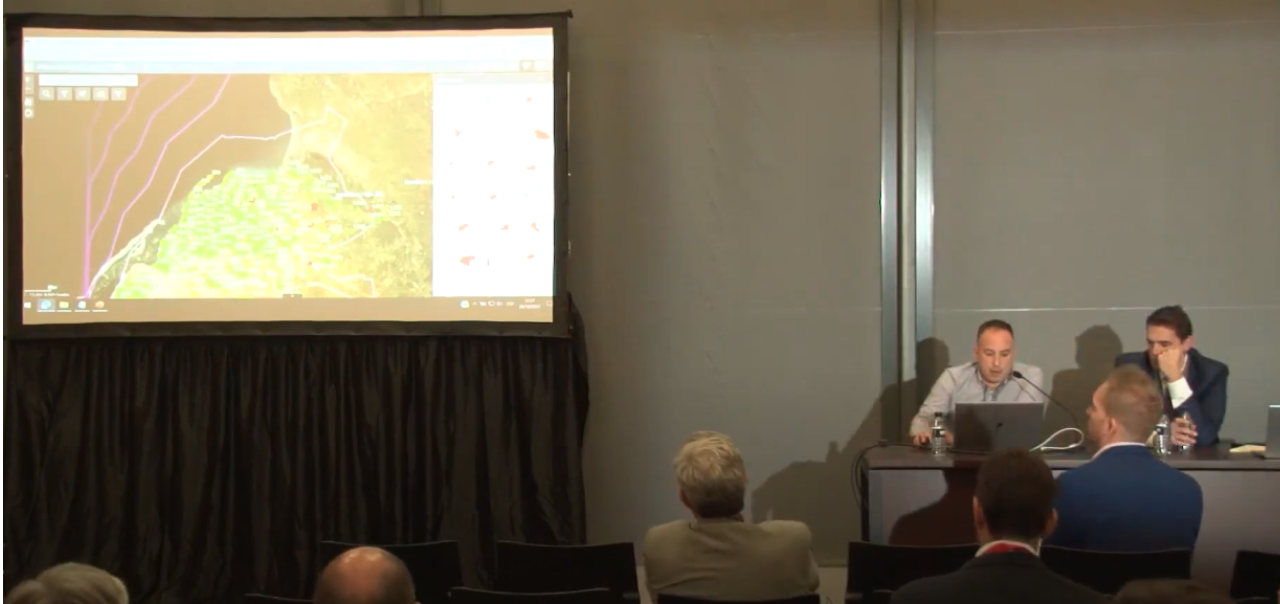
Add comment